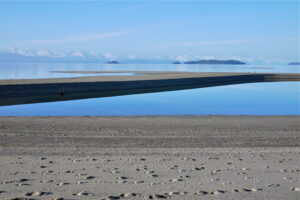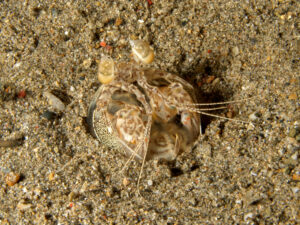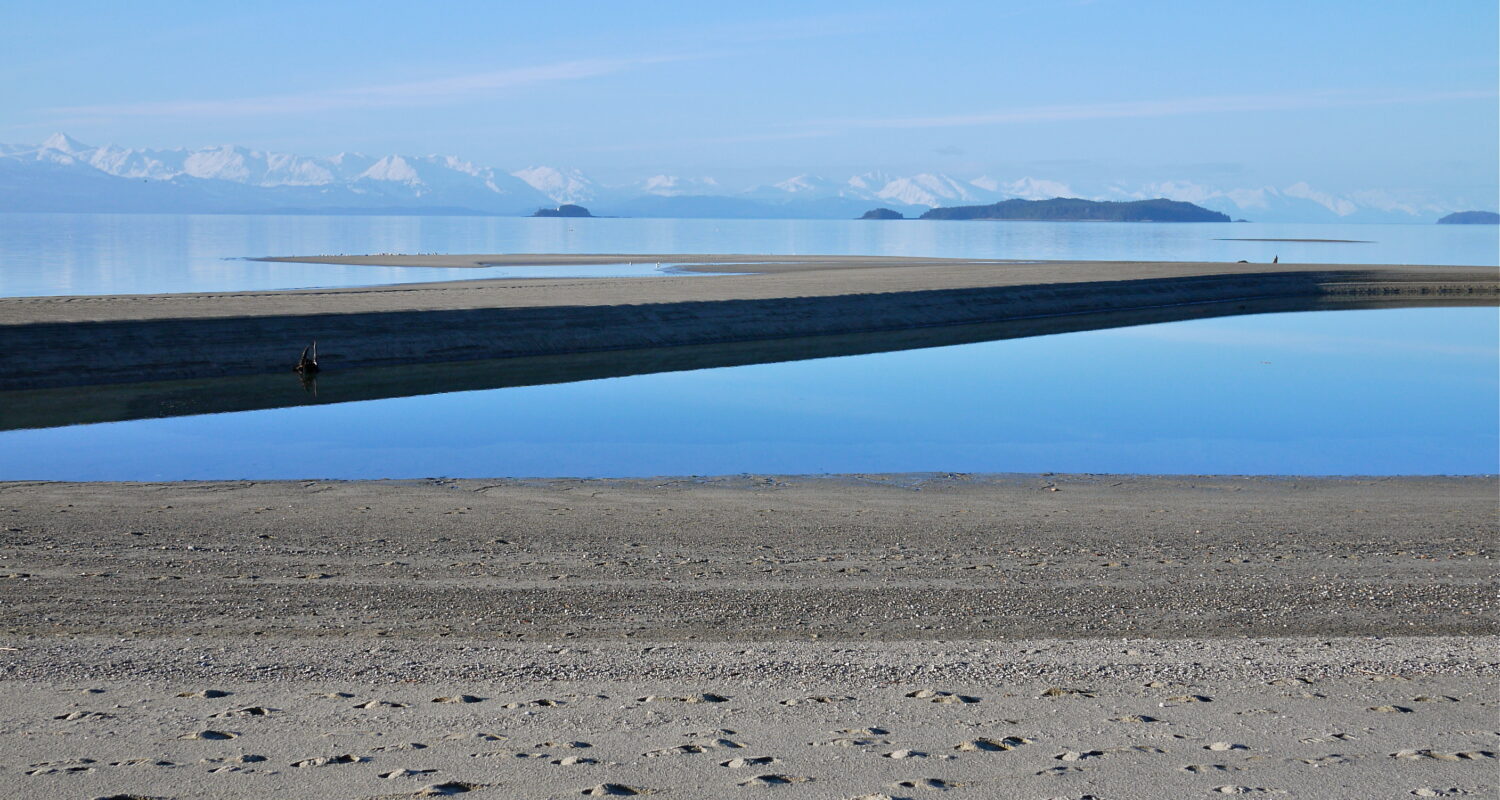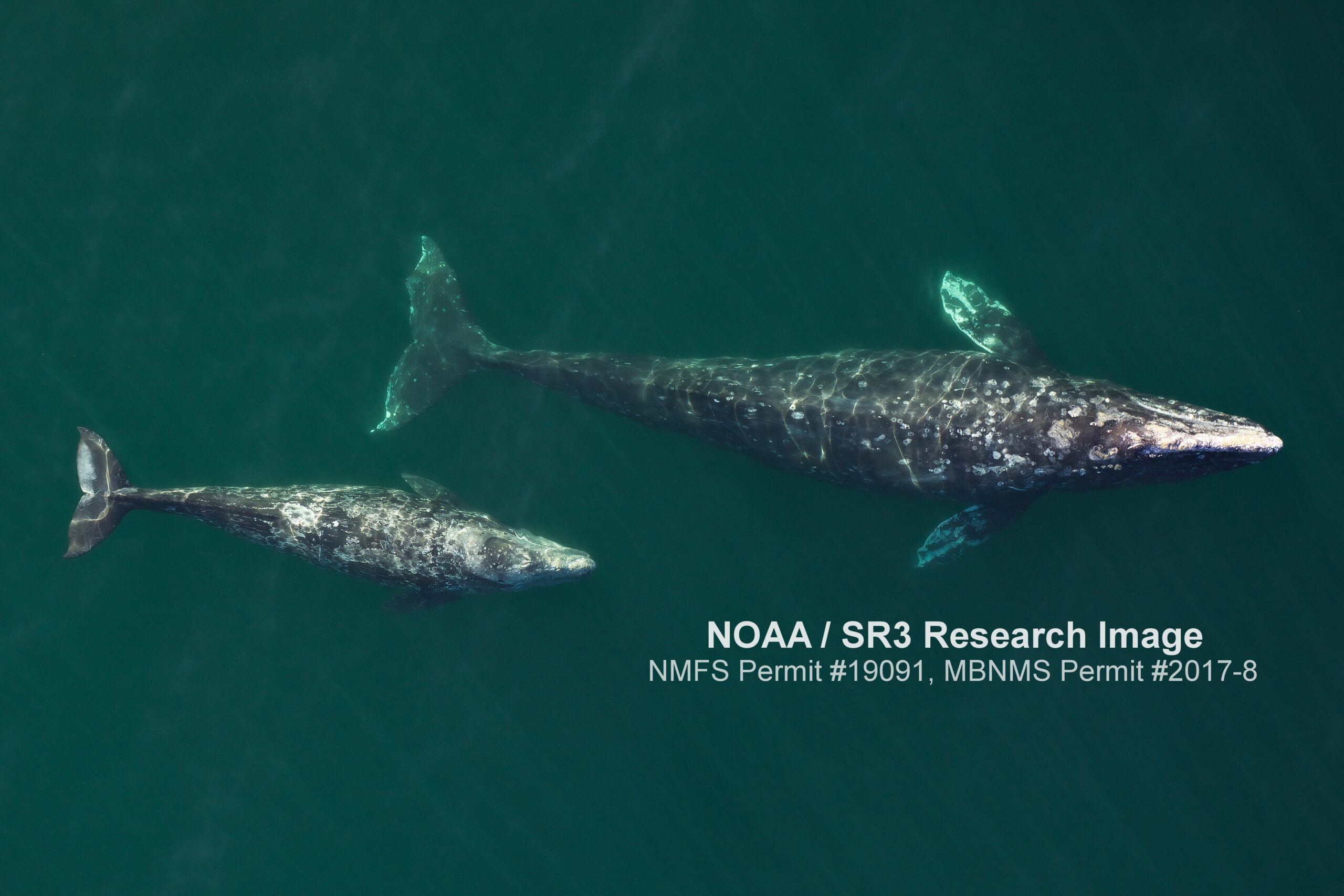Citation
Zhou, Z., Bouma, T. J., Fivash, G. S., Ysebaert, T., van IJzerloo, L., van Dalen, J., … & Walles, B. (2022). Thermal stress affects bioturbators’ burrowing behavior: A mesocosm experiment on common cockles (Cerastoderma edule). Science of the Total Environment, 824, 153621.
https://doi.org/10.1016/j.scitotenv.2022.153621
Coastal Divide
Intertidal ecosystems are habitats that straddle the divide between land and sea, offering unique areas that host diverse wildlife. Many of these ecosystems, such as mangroves and salt marshes, are also considered very valuable because of the role they play in carbon sequestration and coastal protection, offering natural protection from flooding as climate change continues to raise sea levels. Tidal flats are a common feature of these ecosystems and are essential to mitigate flooding.

Credit: Joseph- Wiki Commons
Stirred Up Flats
Tidal flats are made up of marine sediment, large swaths of sand or mud important to the habitat’s health. These can be flat, dry beds with little water cover, or can have depressions that allow pools of water to form. Tidal flats are also stirred up by the animals that live in them by a process called bioturbation, a disruption of sediment that can increase erosion. These bioturbators walk, swim, dig, eat, sleep, reproduce, and die in that sediment, and so their behavior can have big impacts on the integrity of tidal beds. One particularly notable behavior in bioturbating animals is burrowing, or moving through sediment to form a structure. Burrows are these animals’ main shelter, and burrowing is used as a defensive behavior to hide from predators and other threats.
Hot n’ Hypoxic
Tidal flats are becoming rarer, but their ecological value is higher than ever, so it is important to understand how these systems are influenced. Climate change is expected to expose tidal flats to harsher, more extreme weather events such as marine heatwaves, which have become more common in recent years. Marine heatwaves can make ocean water more hypoxic (low-oxygen) and cause massive die-offs of many intertidal organisms, including bioturbators.

Credit: Luis Miguel Bugallo Sánchez
Fun with Cockles
The authors wanted to find out how heatwaves affected bioturbation behavior of the common cockle (Cerastoderma edule) in artificial tidal flats in the presence and absence of water pools covering the animals during low tide. They collected 400 cockles from the Netherlands, and brought them to their mesocosm lab for experimentation. The researchers built artificial tidal flats, made from an upper tank filled with mud and a lower tank to allow water cycling and simulate tides. Extra water was pumped from that tank back up to the sediment tank. They also wanted to know how water pools affected the cockles, so the researchers used PVC pots stuck inside the sediment to create a boundary. Then, they could remove some sediment from the inside, so that when water drained at “low tide” there would be a pool of water left over. Additionally, at the end of each treatment the scientists measured the cockles’ respiration rates (how quickly they breathed and consumed oxygen) in specialized respiration chambers, and counted mortality rates. Finally, they simulated heat waves by hanging terrace heaters over the tanks to control temperature.
All On the Line
But what does this have to do with bioturbation? The authors were examining how the cockles’ burrowing behavior responded to heatwaves, and if those responses changed if they had a cushion of water over their flats. Measuring burrowing can be difficult, since it’s hard to see into mud, and sticking instruments into burrows can collapse them. But the researchers needed to measure these depths, so they let the cockles measure their burrows for them! By gluing a string to their shells, they took periodic measurements of their burrowing depths under the different treatments.
Burrow Fever!
The results revealed that the stress of heatwaves forced the cockles to make big changes in their burrowing. The elevated temperatures in both the water and the sediment resulted in increased burrowing activity. As the animals got more heat stressed, their burrowing depths changed much more often. The cockles without pools would burrow deeper into the sediment during the heat waves, but then burrow upward to the surface when high tide came. The cockles with pools over them would immediately move upwards and eventually surface above the mud into open water. The authors also found that all of the cockles’ respiration rates would increase during heatwave burrowing. Most of the cockles survived heat stress for the first 4 weeks of treatment, but then saw massive die-offs after week 5.

Credit: Nick Hobgood
Out of Air
Why this change? The authors argue that hypoxia may be a large part of the problem. High temperatures increase the bioturbators’ respiration rates, and so they consume more oxygen more quickly. Higher temperatures also reduce the amount of oxygen held in seawater. As the oxygen levels in the tanks dropped, the cockles lost their ability to breathe properly, and eventually died in large numbers. Therefore, they burrowed towards the more oxygenated surface if they had water above them. If not, they were forced down towards cooler sediment.
A Muddy Future
As climate change continues, marine heat waves will become more common, so it’s important to understand the influence they are having on marine ecosystems. The increased burrowing activity shown in cockles, which can last for weeks at a time, can have serious impacts on the stability of sediment beds. The large die-offs caused by long term heat stress can also damage bioturbators’ population health and affect the entire tidal flat ecosystem. Increased bioturbation is linked to higher erosion rates in tidal flats, meaning heat waves will be directly impacting the economic and structural benefits these habitats offer coastlines. It is therefore essential to keep a close eye on these heatwave events and their threat to intertidal zones.
I’m pursuing a Master’s in Biology at Walla Walla University. My research is focused on the best marine animal ever, octopuses. I am particularly interested in octopus behavior and their interactions with their environment. My thesis is exploring burrowing behavior of a particular octopus species, Muusoctopus leioderma, in Anacortes, WA. Before this, I worked as a fisheries observer in Alaska, collecting data on the commercial fishing effort in the Bering Sea and generally spending way too much time on boats. I like all things ocean, including diving, surfing, and writing about cool topics in marine science!


